Safe Household Cleaning is reader-supported. All reviews are independent and any products reviewed are purchased by the site owner. To help fund this model, some of the links on the site are affiliate links. If you decide to make a purchase from one of these links, this site will receive some commission. At no cost to you. It helps keeps this place running. Learn more
| Method Clementine Kitchen Surface Cleaner | |
|---|---|
| Review Score |  |
| Ewg Rated | B |
| Ingredients | Water Decyl Glucoside Laureth-7 Sodium Gluconate Fragrance Sodium Carbonate Limonene Linalool Citric Acid Potassium Hydroxide Polymeric Red Polymeric Yellow |
The cleaning power behind Method Clementine Kitchen Cleaner is top quality. It's easy to apply and easy to clean. That said, it isn't shy on fragrances. As someone who doesn't suffer from sensitive skin conditions, I'm more than happy using it. However, for those who do are sensitive to fragrances, it might be one to avoid. | |

Kitchens are notoriously difficult to keep clean.
Depending on the nature of your household, you might find yourself cleaning yours upwards of twice a day.
Seeing as we have two cats, two children, and two adults our kitchen could easily become a hub of messy mayhem.
To try and keep that messy mayhem at bay, I am testing Method Clementine Kitchen Surface Cleaner in my kitchen and my utility room.
As one of the eco-friendly cleaning market’s most vibrant manufacturers, Method has an 18-year history of producing non-toxic products. Their early Californian beginnings in 2000 under founders Eric and Matt resulted in rapid expansion worldwide. The company’s overall ethos is to make products that work for both homeowners and the planet, allowing for a genuinely non-toxic cleaning experience.
According to Method’s website, they understand the importance of carefully selecting biodegradable plant-based ingredients. And unlike most of their peers, they understand the importance of being transparent about ingredients.
If we don’t know what’s in our products, how are we supposed to choose an option that works for us?
Method is essentially a company who understand the issues with today’s cleaning industry and want to offer a safer alternative.
We’ve reviewed a number of Method products before, love what they are about, and I couldn’t wait to receive the product.
First impressions: Method Clementine Kitchen Surface Cleaner’s branding and packaging
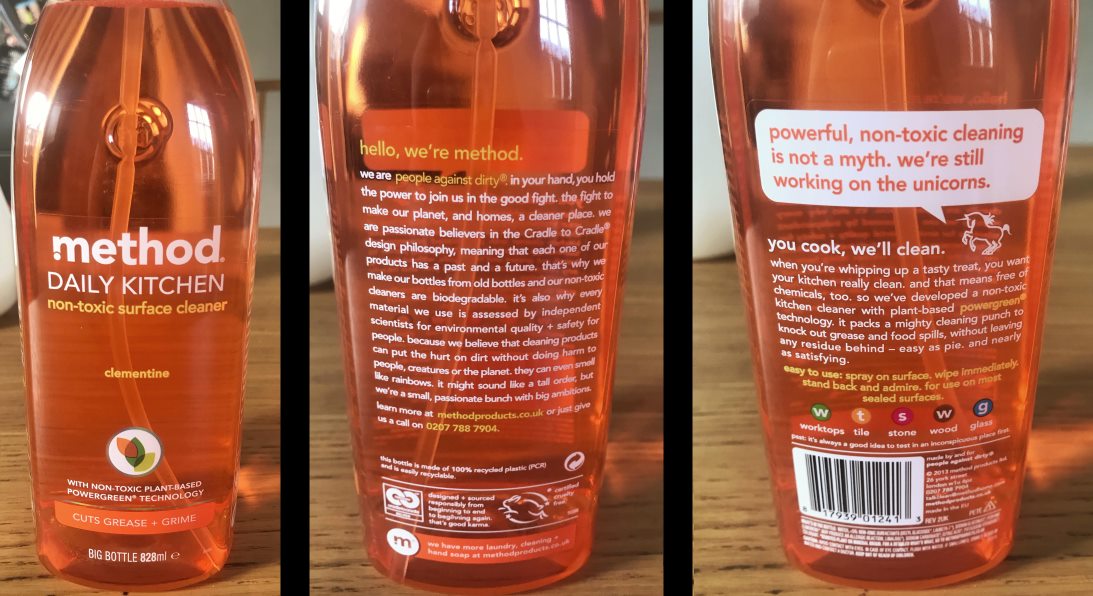
Method Clementine Kitchen Surface Cleaner benefits from a vibrant color that represents everything the brand is about.
As you might expect from the name, that color is orange:
The front of Method Clementine Kitchen Surface Cleaner clearly details that:
- It’s non-toxic
- It’s ideal for tackling grease and grime (a claim I’ll test!)
- And that it uses plant-based technology
When Method say that they’re using plant-based technology, they’re referring to the brand’s Powergreen® approach. According to their website, this is a combination of plant-based substances, non-toxic substances, and biodegradable materials.
To the side of the bottle, you’ll find one of Method’s quirkier statements:
After declaring that Method can’t prove whether unicorns are real or not, it gives clear instructions on how to use the cleaner: “Spray, then wipe immediately.” It also identifies the surfaces it’ll work on:
- Worktops
- Tile
- Stone
- Wood
- Glass
As a part of my testing process, I did use Method Clementine Kitchen Surface Cleaner on my sinks too (which I believe are either aluminum or steel). This wasn’t in an attempt to purposefully ignore Method’s directions; it’s just where most of the mess appears!
Like their other products, the opposite side of Method’s kitchen cleaner features information about the brand and its non-toxic approach:
Reassuringly, it also highlights the cruelty-free certification the cleaner received, just to make it clear that it wasn’t tested on animals.
While the product looks orange inside the bottle, it exits with a perfectly normal foamy appearance.
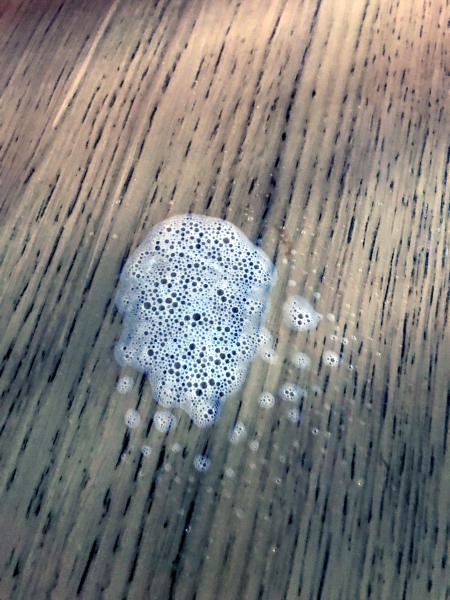
The clementine smell is sort of obvious, but it doesn’t quite beat all the other cleaning adjuncts in there.
When I left my kitchen and returned after cleaning, it did smell more like cleaning products than it did Clementines.
It wasn’t as overpowering as bleach, but the smell doesn’t last for long.
Is Method Clementine Kitchen Surface Cleaner good for cleaning kitchen surfaces?
Although I’m happy to grumble about the smell, I can’t complain about how well the product itself works. It tackled every bit of dirt and grease I tested it on, to near perfection.
To put the cleaner to the test, I decided to use it on the following areas:
- Cat food stains in my utility room
- A slightly grubby tap in my utility room
- An unidentified stain on a wooden kitchen door
- Raw egg on my kitchen draining area
- Coffee grounds and general stains in my sink
The cat food stains in my utility room
As both cats need to be fed twice a day and my 11-year-old likes to do the job, these stains are a daily occurrence. They eat a mixture of meat and jelly, which means the stains are both stubborn and greasy once they set in:
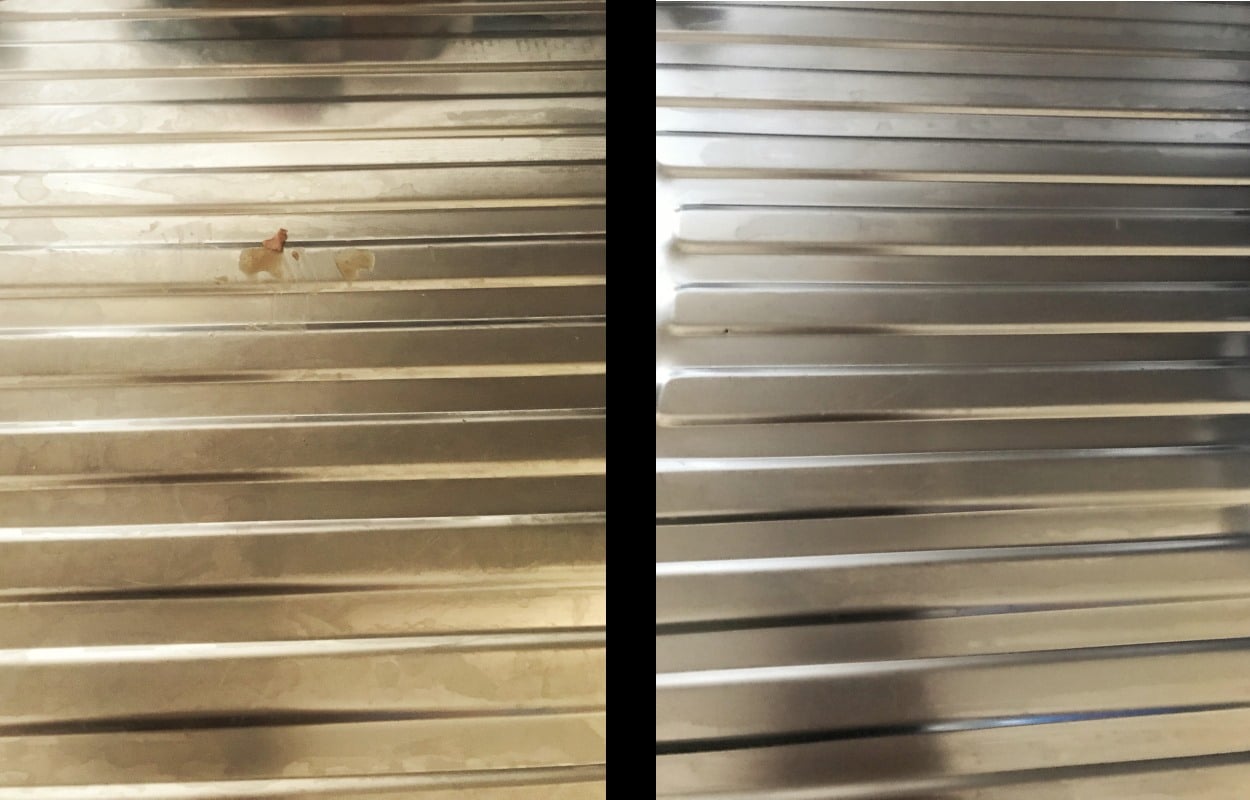
I followed Method’s instructions and scrubbed immediately after spraying. It took very little effort to remove the stains, resulting in a much-less-gross-looking utility counter:
A slightly grubby looking tap
Although this tap was recently cleaned, the utility room is where everything that’s overly messy happens in our house. As a result, it looks a little forlorn and drab.
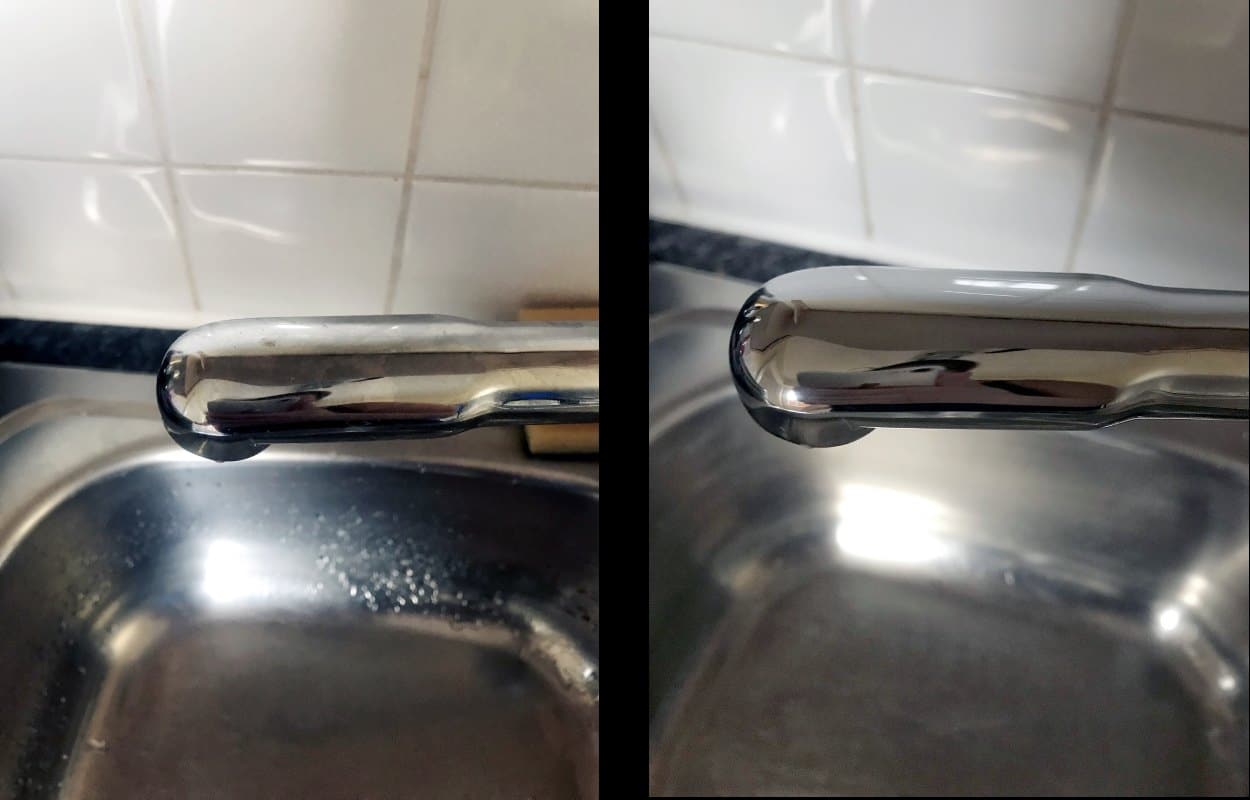
After cleaning the tap and rinsing it with clear water, I chose to leave it to air dry. When I returned, it looked undeniably sparkling:
An unidentified wooden stain on the kitchen door
Who knows what this stain actually is? Both of us adults are fairly dedicated coffee drinkers, so there’s a high chance it came from my cafetière. Other options include gravy, which is also greasy and a little bit difficult.
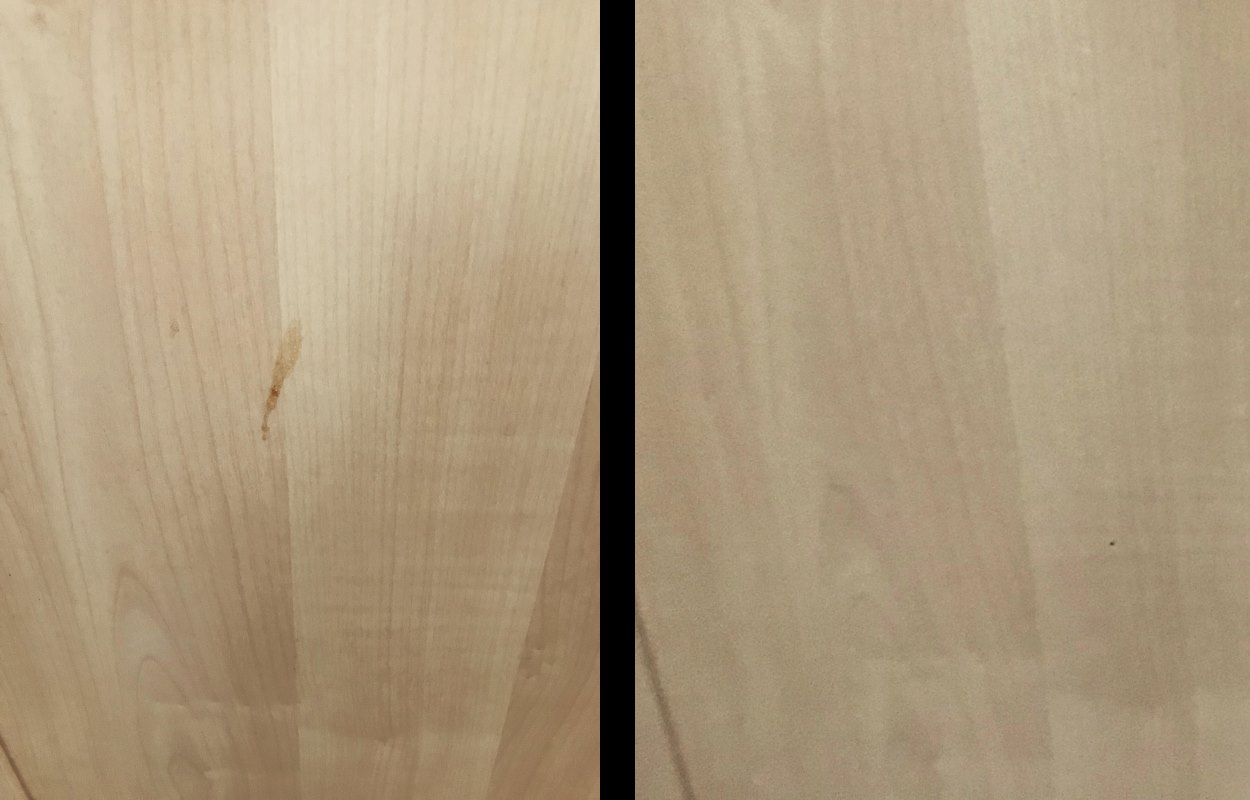
Once again, the results are pretty impressive. I tried to take a minimalist approach here, only because too much wetness makes wood of any kind warp. So, these results came from using the Method Clementine Kitchen Surface Cleaner alone. There was no water involved.
Raw egg on my kitchen draining area
Again, we all love eggs in this house, especially when we’re trying to avoid sugary cereals. Unfortunately, that also means raw egg setting into the kitchen draining area, especially when we’re in a rush. As eggs are high in cholesterol, they solidify quickly and turn into little lumps of fat that require extra effort to remove. I stuck to the instructions on the cleaner bottle, but I did decide to scrub vigorously to achieve the same results as the other areas.
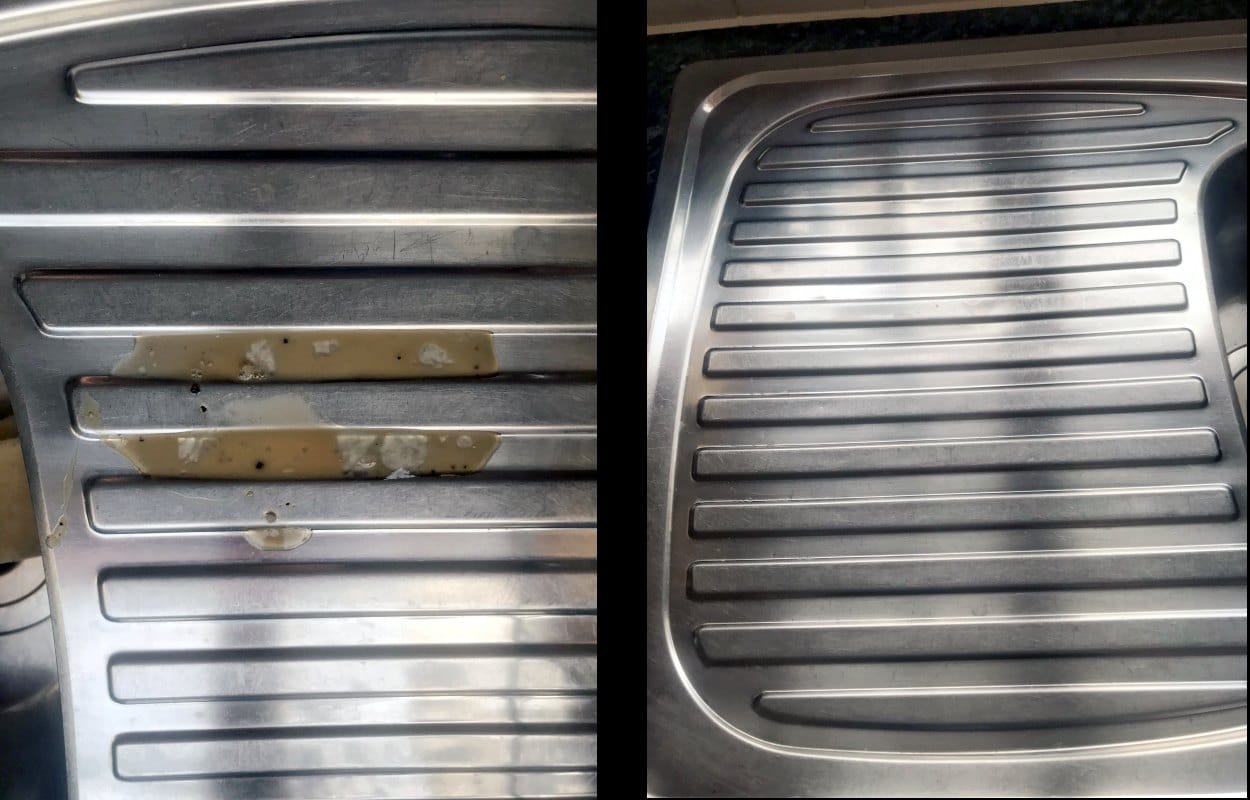
A combination of extra effort and the cleaner removed the egg. Granted, it wasn’t as easy as the other stains, but it disappeared soon enough.
General mess in the sink
The general mess that appears in my sink can be anything from coffee grounds to milk. So, nothing that’s too taxing, but I did want to see if the cleaner would give it a chance to shine.
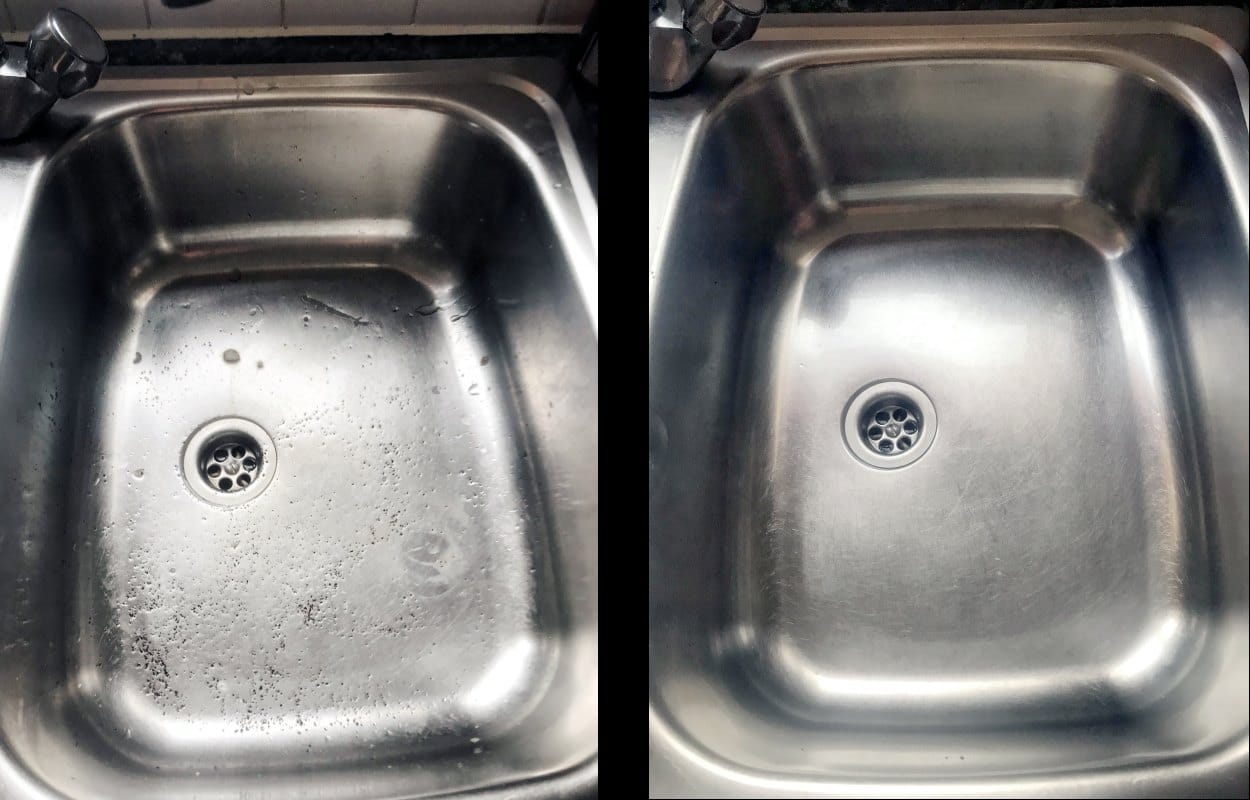
Honestly? I have zero complaints about the way it looks. I’d also like to note that the Method Clementine Kitchen Surface Cleaner doesn’t become overly foamy. If you’re into water conservation, that’s excellent when it comes to your post-clean rinse.
My overall conclusion on Method Clementine Kitchen Surface Cleaner’s efficacy
Overall, I’m confident that the cleaner is effective. The biggest bonus is that it does require very little effort. As I mentioned at the start, my house comes with an active kitchen. Having a non-toxic cleaner that acts rapidly is a great time-saver, even if I’m not too sure about the smell.
How is Method Clementine Kitchen Surface Cleaner Formulated?
Method uses a combination of gentle nonionic surfactants (to dissolve oils and grease),  chelating agents (to help soften hard water), ph adjusters and fragrances to achieve the level of cleaning power offered.
The two surfactants, Decyl Glucoside and Laureth-7 are plant-derived, biodegradable and very gentle.
Both of the surfactants are both alkaline, so Citric Acid and Potassium Hydroxide have likely been added to adjust the ph levels.
Sodium Gluconate has been added as a chelating agent to help soften hard water. This, again, is plant-derived and is often added to formulations as a skin conditioning agent.
So far so good. These are all biodegradable, plant-derived ingredients that are relatively gentle on your skin (just remember to wear gloves…)
In fact, the only real concerns in this formula are the fragrances.
The formula contains a generically named Fragrance. While we don’t know what fragrances the company have used, we do now that fragrances are a very common cause of contact dermatitis. In addition to the threat of contact dermatitis, fragrances are volatile ingredients. They remain in the air after cleaning has ended – therefore causing potential exposure to anyone entering your kitchen shortly after. They can cause asthma type symptoms, trigger an asthma attack and studies have shown that they can long-term damage.
Finally, Method also lists two colorants’ amongst the ingredients. Once again, it isn’t very specific as to which colorant is present and there’s more than one out there when it comes to orange. As a result, it’s difficult to report on its effects with any degree of accuracy.
While the formulation is generally excellent, if you’re sensitive to fragrances, I would look elsewhere.
So do I recommend it?
Overall, the cleaning power behind this kitchen cleaner is top class. It’s easy to apply and easy to clean.
The formulation is also generally excellent too. The ingredients are biodegradable and plant-based. That said, it isn’t shy on fragrances. As someone who doesn’t suffer from sensitive skin conditions, I’m more than happy using it.
However, for those who do are sensitive to fragrances, it might be one to avoid.
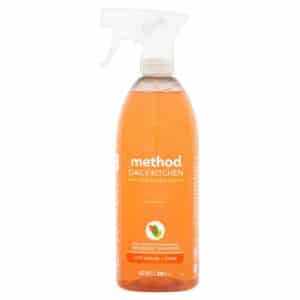
|
| Method Kitchen Surface Cleaner is on sale now |

|
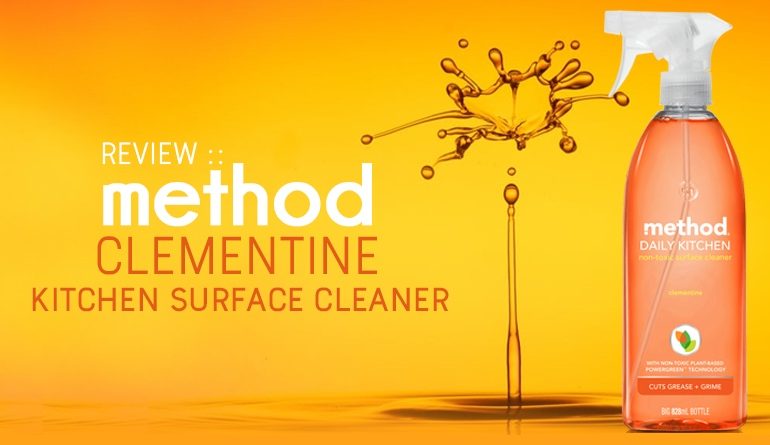
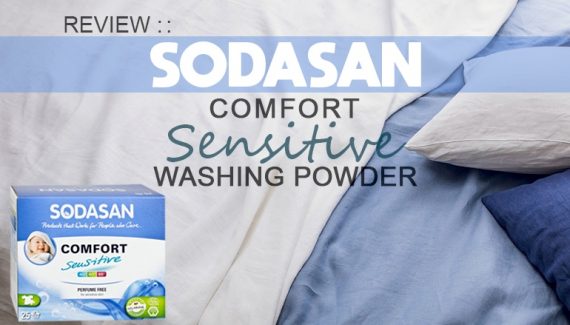
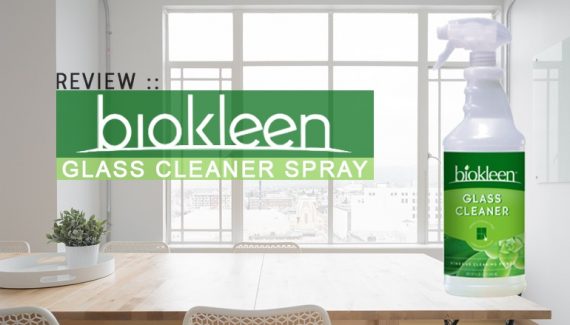
No Responses Yet